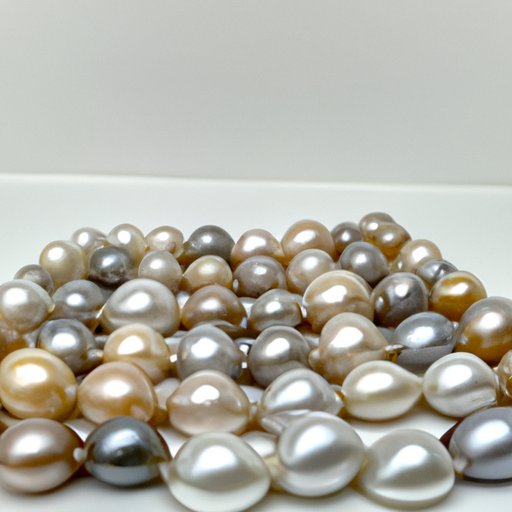An Overview of Cultured Freshwater Pearls
Cultured freshwater pearls are the most widely available type of pearl on the market. They’re known for their affordability and beauty, making them a popular choice for pearl jewelry. But what exactly are cultured freshwater pearls? Here’s an overview of this type of pearl.
Definition
Cultured freshwater pearls are produced by mollusks in freshwater lakes, rivers, and ponds. The process of cultivating these pearls is very similar to that of saltwater pearls. A small bead or piece of mantle tissue from another mollusk is implanted into a host mollusk, and the mollusk produces layers of nacre around it until a pearl is formed. As the name implies, these pearls are grown in fresh bodies of water instead of the ocean.
Where They Come From
Freshwater pearls are typically sourced from China, Japan, and the United States. In recent years, however, they have been farmed in many other countries as well, including India, Vietnam, and France.
Characteristics
Cultured freshwater pearls come in a variety of shapes, sizes, and colors. The most common shapes are round, semi-round, drop, and baroque. They range in size from 2mm to 14mm, although larger sizes are available. Colors can range from white to pink to lavender to black.
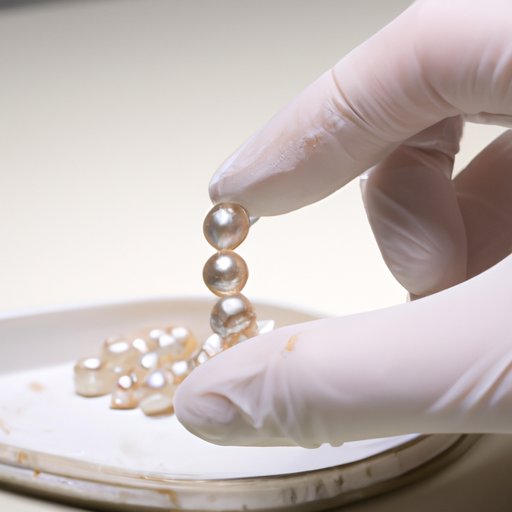
How to Identify Cultured Freshwater Pearls
In order to identify cultured freshwater pearls, there are several key elements that should be taken into consideration. These include color, size, luster, nacre thickness, shape, and drilling holes.
Color
The color of cultured freshwater pearls can vary significantly, ranging from white to pink to lavender to black. It’s important to note that the color of a pearl will not necessarily indicate its quality; in fact, some of the most valuable pearls are those with unusual colors.
Size
Freshwater pearls range in size from 2mm to 14mm, though larger sizes are available. Larger pearls tend to be more expensive than smaller ones, but this does not necessarily mean they are of higher quality.
Luster
The luster of a pearl is determined by how much light it reflects. High-quality pearls will have a bright, mirror-like luster, while lower-quality pearls may appear dull or cloudy. The luster of a pearl is often one of the first things that people notice when evaluating a pearl.
Nacre Thickness
Nacre is the material that forms around the bead or nucleus inside a mollusk, creating the pearl. The thicker the layer of nacre, the better the quality of the pearl. Thin layers of nacre can make a pearl more susceptible to damage.
Shape
Cultured freshwater pearls come in a variety of shapes, including round, semi-round, drop, and baroque. While round pearls are considered the most desirable, non-round shapes can offer unique beauty as well.
Drilling Holes
Most cultured freshwater pearls have a small hole drilled through the center. This is done to allow the pearl to be strung onto a necklace or bracelet. The quality of the drilling can indicate the quality of the pearl; poor quality drills can cause damage to the pearl.
The Benefits of Owning Cultured Freshwater Pearls
Cultured freshwater pearls offer several benefits for those looking to purchase pearl jewelry. These include lower cost, variety, durability, and easy care.
Lower Cost
One of the biggest advantages of buying cultured freshwater pearls is their affordability. These pearls are generally much less expensive than saltwater pearls, making them an attractive option for those on a budget.
Variety
Cultured freshwater pearls come in a wide range of shapes, sizes, and colors. This makes it easy to find the perfect pearl for any occasion, whether it’s an everyday accessory or a special gift.
Durability
Freshwater pearls are highly durable, which means they are less likely to chip or crack over time. With proper care, they can last for generations.
Easy to Care For
Cultured freshwater pearls require minimal maintenance. With regular cleaning and proper storage, these pearls can remain beautiful for many years.
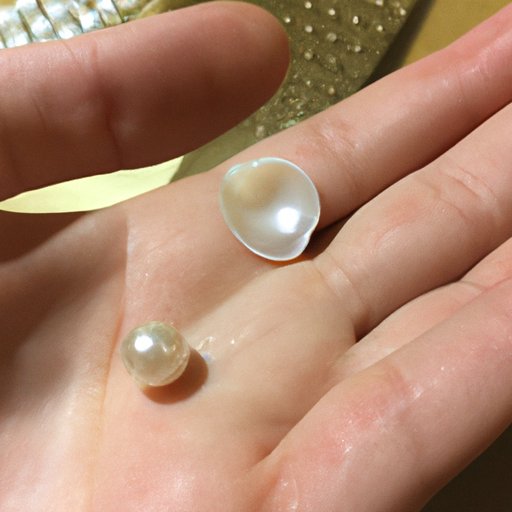
A Guide to Caring for Cultured Freshwater Pearls
Taking good care of your cultured freshwater pearls is essential if you want them to last. Here are some tips for keeping your pearls looking their best.
Cleaning
To clean your pearls, use a soft cloth dampened with lukewarm water. Gently wipe away any dirt or debris, being careful not to scrub too hard. Avoid using harsh cleaners or abrasive materials, as these could damage the pearls.
Storing
Pearls should always be stored away from direct sunlight and extreme temperatures. It’s also important to keep them away from other jewelry, as this could scratch the surface of the pearls. Store your pearls in a soft pouch or box lined with felt or velvet.
Proper Handling
When handling your pearls, make sure to do so gently. Avoid dropping them, as this could cause them to chip or crack. Additionally, never expose your pearls to chemicals, such as perfumes, hairspray, or lotions, as these can damage the surface of the pearls.
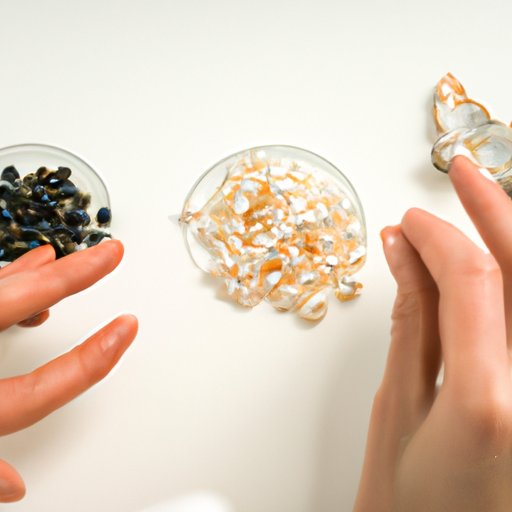
Comparing Cultured Freshwater Pearls and Other Types of Pearls
While cultured freshwater pearls are the most widely available type of pearl, there are other types worth considering as well. Here’s a quick look at how cultured freshwater pearls compare to other types of pearls.
Akoya Pearls
Akoya pearls are produced in the waters off Japan and China, and are the most classic type of pearl. They typically range in size from 2mm to 10mm, and come in shades of white, cream, and gold. Akoya pearls tend to be more expensive than freshwater pearls.
South Sea Pearls
South Sea pearls are produced in the oceans off Australia, Indonesia, and the Philippines. They range in size from 8mm to 20mm, and come in shades of white, gold, and silver. South Sea pearls are the most expensive type of pearl.
Tahitian Pearls
Tahitian pearls are produced in the warm waters of French Polynesia. They range in size from 8mm to 15mm, and come in shades of black, gray, and green. Tahitian pearls are more expensive than freshwater pearls, but less expensive than South Sea pearls.
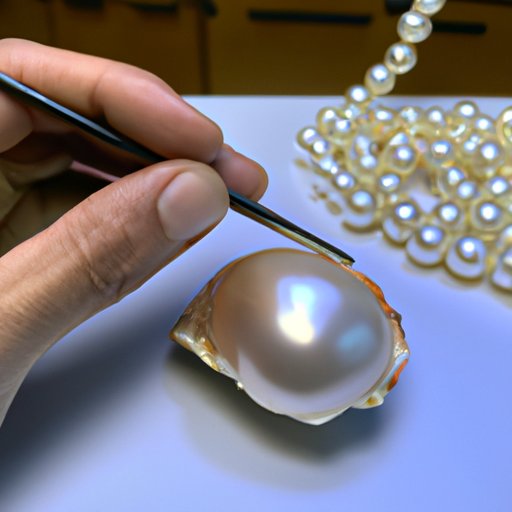
Exploring the History of Cultured Freshwater Pearls
The history of cultured freshwater pearls stretches back thousands of years. Here’s a look at how these pearls have evolved over time.
Ancient Times
The production of freshwater pearls dates back to ancient Rome and Greece. According to historical records, the first freshwater pearls were harvested from the rivers of Europe. Over time, the production of these pearls spread to other parts of the world, including Asia and North America.
Modern Times
In the twentieth century, the technology used to cultivate freshwater pearls was greatly improved. This led to an increase in production and a decrease in cost, making these pearls much more accessible to the public. Today, cultured freshwater pearls are the most widely available type of pearl on the market.
Trends in Cultured Freshwater Pearl Jewelry
Cultured freshwater pearls are a popular choice for pearl jewelry, thanks to their affordability and wide range of colors and shapes. Here are some of the latest trends in cultured freshwater pearl jewelry.
Statement Pieces
Large, statement pieces featuring multiple strands of pearls are becoming increasingly popular. These pieces are perfect for special occasions and make a bold fashion statement.
Multiple Layering
Layered pearl necklaces are a great way to add texture to an outfit. Stacking several different lengths and styles of pearls can create a unique and stylish look.
Combining Metals
Mixing metals is a trend that has become increasingly popular in recent years. Combining gold and silver with pearls creates a modern, eclectic look.
Natural Colors
Natural colored pearls are becoming more sought after. Shades of pink, lavender, and black provide a unique and sophisticated touch to any outfit.
Mixed Shapes
Mixed shaped pearls are a great way to add visual interest to a piece of jewelry. Combining round, baroque, and drop shaped pearls can create a stunning effect.
Conclusion
Cultured freshwater pearls are an affordable and beautiful option for pearl jewelry. With their wide range of shapes, sizes, and colors, these pearls are sure to add a touch of elegance to any outfit. Whether you’re looking for a classic piece of jewelry or something unique and modern, cultured freshwater pearls are a great choice.
(Note: Is this article not meeting your expectations? Do you have knowledge or insights to share? Unlock new opportunities and expand your reach by joining our authors team. Click Registration to join us and share your expertise with our readers.)
